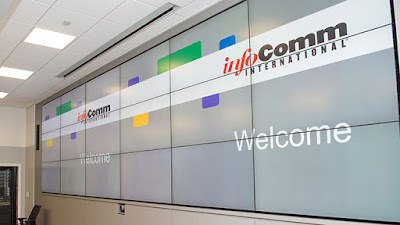donderdag 6 juli 2017
Optimizing Your Presentation Design for Your Display Type.
Source; www.leyard.com
Back in the old days, when presentations happened on projectors, the typical PowerPoint or Keynote background was white or a light color. This harkens back to when slides were actually slides or overhead transparencies on a dimly lit lightbox. In any of these cases, when the room was dark and the display was not, white backgrounds provided the best brightness and best chance at readability.
Today, the range of display technologies available for conference rooms and auditoriums have never been larger and those displays are now available in higher resolutions than were available before. We have had to learn and are asked frequently how to optimize slide template designs for different display technologies, and below are some best practices:
1 Consider using a dark background:
Not only does it look modern, but on bright displays like LCD flat panels or LED displays, it avoids you having your retinas burned in a meeting. On LED or other emissive displays, black pixels are off. This means that if you have a black background (not dark charcoal gray, but actually black), you will have the best contrast and your words and images will appear to float on the screen.
2 Avoid gradients:
Depending on the power of your laptop and the processing in or around the display, you may find that gradients will band and not look as clean as you’d like them to look. Color blocks and subtle textures (now visible in 4k) are great choices. 3 You can use all the colors now (but not all at once):
Back in the days of the poor quality IT projector, good luck getting yellow to show up on your slides. And subtleties between shades of blue and green might get lost as well. Today’s flat panel and LED products are much more adept at handling color, so you can more closely align your digital presentations to your online and print assets.
4 Use video:
Don’t use words when you have a picture. Don’t use pictures when you have a video. Although it adds complexity and size to your presentations, consider using video to convey your stories instead of relying upon words and pictures alone.
And a parting word. Just because you can doesn’t mean you should. In presentations, less is often more. Don’t use word art or animated text. Don’t animate your background so that it is a distraction if you have information-dense messages to deliver. Don’t overuse transitions.
Abonneren op:
Reacties posten (Atom)






Geen opmerkingen:
Een reactie posten